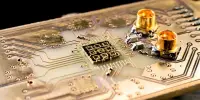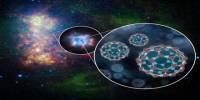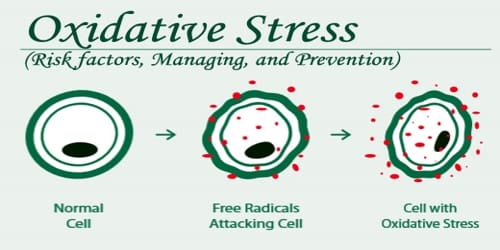Water that will not freeze no matter how cold it gets – a research team led by the Helmholtz-Zentrum Dresden-Rossendorf (HZDR) has discovered a quantum state that can be described in this manner. Experts from the University of Tokyo’s Institute of Solid State Physics, Johns Hopkins University in the United States, and the Max Planck Institute for the Physics of Complex Systems (MPI-PKS) in Dresden, Germany, successfully cooled a special material to near absolute zero temperature. They discovered that an important property of atoms, their alignment, did not “freeze” as expected, but instead remained in a “liquid” state. The new quantum material could be used to create novel, highly sensitive quantum sensors as a model system. The team has presented its findings in the journal Nature Physics.
On the surface, quantum materials appear to be ordinary substances but they have their own unique properties: Inside, the electrons interact with each other and the atoms of the crystal lattice with unusual vigor. This close interaction produces powerful quantum effects that act not only on the microscopic but also on the macroscopic scale. Quantum materials have extraordinary properties as a result of these effects. At low temperatures, for example, they can conduct electricity completely loss-free. Even minor changes in temperature, pressure, or electrical voltage can cause a material’s behavior to change dramatically.
Quantum materials have extraordinary properties as a result of these effects. At low temperatures, for example, they can conduct electricity completely loss-free. Even minor changes in temperature, pressure, or electrical voltage can cause a material’s behavior to change dramatically.
Magnets can, in theory, be considered quantum materials; after all, magnetism is based on the intrinsic spin of the electrons in the material. “These spins can behave like liquids in some ways,” says Prof. Jochen Wosnitza of the Dresden High Field Magnetic Laboratory (HLD) at HZDR. “As temperatures fall, these disordered spins can freeze, similar to how water freezes into ice.” Certain types of magnets, known as ferromagnets, are nonmagnetic above their “freezing,” or more precisely ordering point. Only when they fall below that level do they become permanent magnets.
High-purity material
The international team aimed to create a quantum state in which the atomic alignment associated with the spins did not order, even at ultracold temperatures – similar to a liquid that does not solidify even at extreme cold temperatures. The researchers used a special material to achieve this state: a compound of the elements praseodymium, zirconium, and oxygen. They reasoned that the properties of the crystal lattice in this material would allow electron spins to interact with their orbitals around the atoms in a unique way.

“The prerequisite, however, was to have crystals of extreme purity and quality,” Prof. Satoru Nakatsuji of the University of Tokyo explains. It took several attempts, but eventually, the team was able to produce crystals pure enough for their experiment: In a cryostat, a kind of super thermos flask, the experts gradually cooled their sample down to 20 millikelvin – just one-fiftieth of a degree above absolute zero. To see how the sample responded to this cooling process and inside the magnetic field, they measured how much it changed in length. In another experiment, the group recorded how the crystal reacted to ultrasound waves being directly sent through it.
An intimate interplay
“Had the spins been ordered, it should have caused an abrupt change in the behavior of the crystal, such as a sudden change in length,” explains Dr. Sergei Zherlitsyn, HLD’s expert in ultrasound investigations. “But, as we saw, nothing happened! There were no abrupt changes in length or response to ultrasound waves.” The conclusion: Because of the pronounced interplay of spins and orbitals, the atoms remained in their liquid quantum state – the first time such a quantum state had been observed. This assumption was confirmed by further magnetic field research.
This fundamental research finding may one day have practical applications: “At some point, we may be able to use the new quantum state to develop highly sensitive quantum sensors,” Jochen Wosnitza speculates. “However, we still need to figure out how to generate excitations in this state in a systematic way.” Quantum sensing is regarded as a promising future technology. Because quantum sensors are extremely sensitive to external stimuli due to their quantum nature, they can register magnetic fields or temperatures with far greater precision than conventional sensors.
















